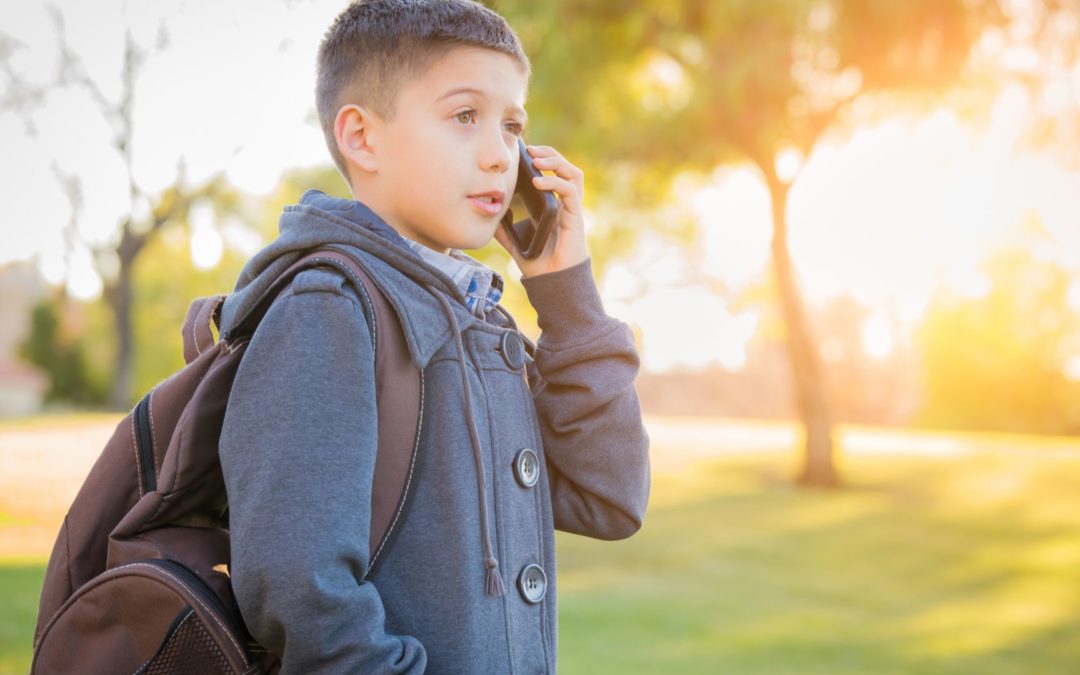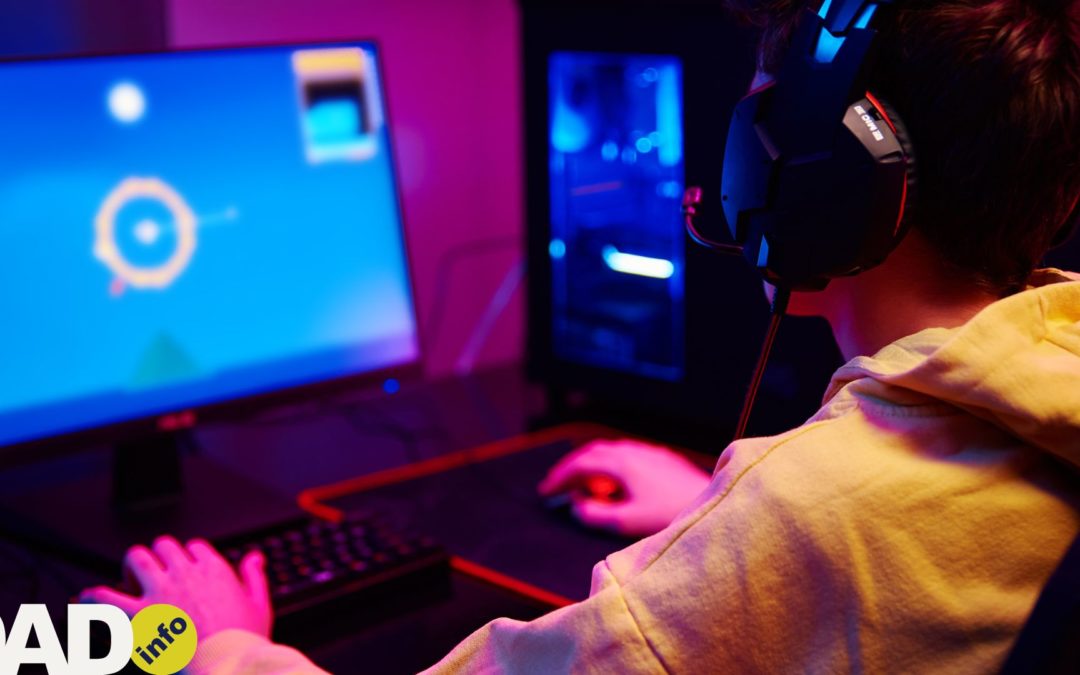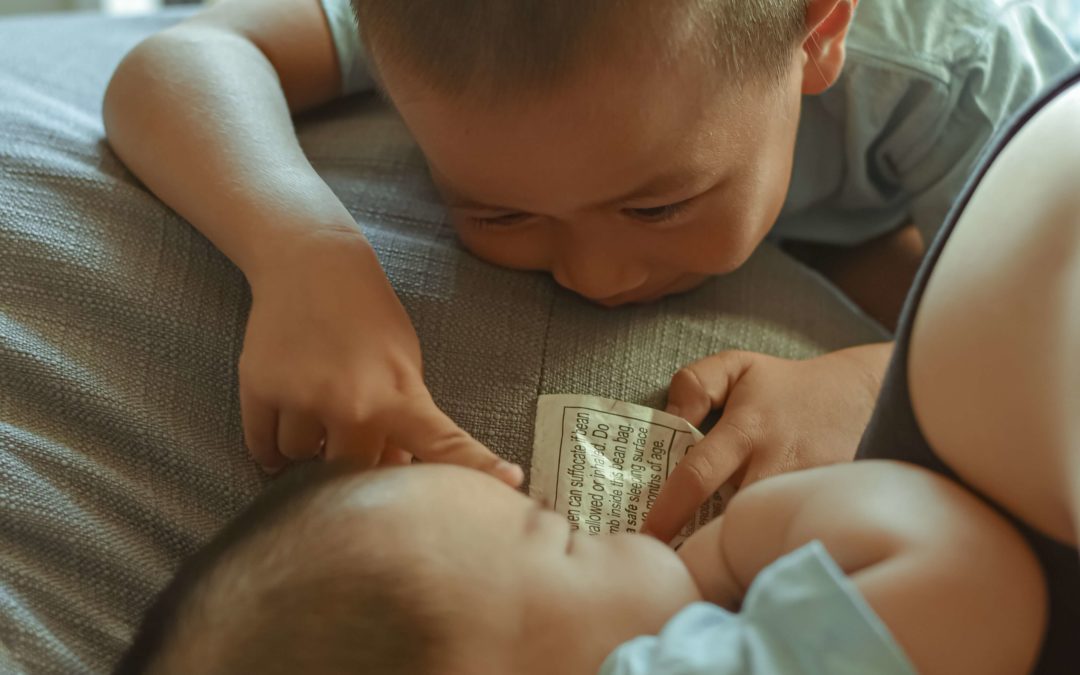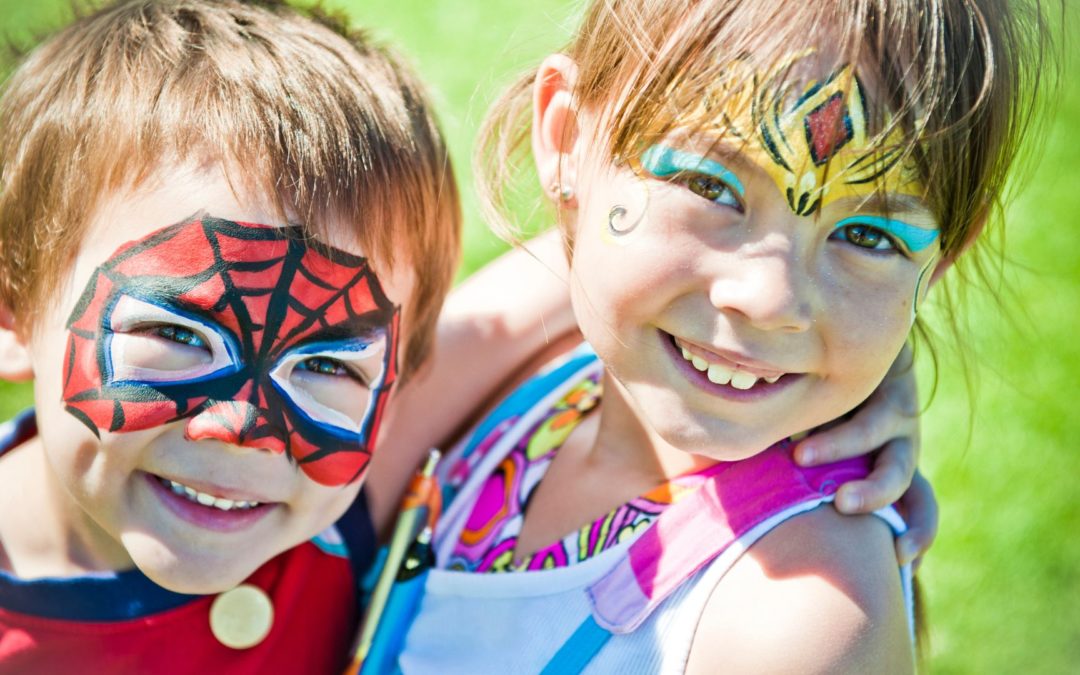Children and pets often make a fantastic combination – but there can also be considerations to be aware of. Whether you are already the proud owner of a pooch with a baby on the way, or have children and want to introduce a pet into your family, here are Dad.Info’s top tips on making it as straightforward as possible…
Introducing your dog to your new baby
Considering how best to introduce your new baby to your dog may begin long before you think it does! There is a good chance that your dog will know that you have a new arrival on the way long before your baby arrives; you may have even noticed that they had started behaving differently around Mum before either of you even knew you were expecting! Dogs have a highly developed sense of smell that can sometimes detect subtle hormone changes in a Mum to be, so you might notice that they are suddenly keeping their distance or conversely, wanting to have extra cuddles.
There are lots of things which you can do to help make the introduction of your new baby to your dog as smooth as possible. Making positive associations and rewarding positive behaviour throughout, as well as making your pet feel included can all help.
Planning ahead
- Think about the space within your home and whether you want to create boundaries using gates or playpens to allow you keep pets away from your baby when you need to.
- If you have a pet that regularly sleeps in the room that baby will be sleeping in, consider shutting them out of the room well in advance of baby using it so that they don’t associate losing their sleeping place with baby arriving. If you allow your pet to sleep on the sofa but don’t want this to happen after baby has arrived start making those changes to your pets’ routine and behaviour in advance of baby arriving.
- Consider buying a baby sized doll and practicing carrying the doll around, sitting on the sofa with it, and teaching your pet to respect the space that baby is in, not jumping on your lap whilst you are holding ‘baby’, praising and rewarding them for good behaviour.
- If you have a dog and will be needing to walk the dog alongside a pram in the future it can be a good idea to practice this in advance of baby arriving, allow the dog to sniff the pram, get used to the movement, and practice walking with your dog and the pram. If your dog pulls on the lead then think about going to some training classes before baby arrives, or investigating different collars or harnesses that can help with pulling.
- There are a huge range of slings and carriers available that can be really helpful if you will be walking your dog and don’t want to use a pram. Many towns have a sling library and qualified babywearing consultants that can help you find and fit the right one for you and your baby.
- You can by special CD’s that include a range of sounds to de-sensitise pets, one of the sounds being a crying baby. Pets can find the sound distressing, so by introducing them to it early on, played at a low volume that is gradually be increased can help to desensitise them to the sound before they hear it for real.
Once Baby arrives
- Allow your pet to sniff a blanket that has been in close contact with baby before they meet them perhaps giving them a treat at the same time, creating positive associations with the scent which will be all new to them.
- When they first meet, allow the pet to see and sniff baby if they wish to, under close supervision of course, and perhaps give your pet a new toy, or some treats, creating a positive association with the new arrival. From the pets’ perspective, if they are suddenly shut out of the room when baby arrives they can feel left out, so it can help to try and make them feel included.
- Allow the pet the time and space to adjust, lots of pets are totally un-phased by the arrival of a baby, some will take more time to get used to baby being around, so don’t rush them but just allow them to get to know baby at their own pace.
- The arrival of a new baby is a time of disruption for the whole family as you settle and establish the new family routine, and spend time getting to know your new baby. Try to keep your pets’ normal routine if you can so that they don’t become unsettled. Stick to regular feeding and walk times for dogs, as new parents you will be very occupied with baby, so walking the dog is one of those essential tasks that friends and family can assist with, or some parents employ the services of a dog walker for a period of time to help out.
- Try to spend a little bit of quality time with your pet every day so that they don’t feel left out, baby will naturally be getting lots of cuddles and attention, so giving your pet some individual attention every day will help them feel included.
Mobility and beyond
- Your pet may be very accepting of your baby, but once babies become mobile things can change as the baby starts crawling and then walking and is able to approach the animals personal space, climb into the animals bed, pull hair, ears and tails and get to food and water bowls.
- Supervise this phase carefully and ensure that the pet has a safe space of their own that they can escape to for some peace and quiet. Whilst some will be happy to have a toddler handling them, others may be uncomfortable and you may need to use gates or playpens to allow them space until the child is a little older and can learn to respect the animals’ space a little more.
Introducing your child to a new dog
If you are bringing a new dog into your home, you will need to spend some time with your children to help them understand how to behave around your new family pet.
There is an unfortunate misconception that certain breeds are not safe around children, but the truth is any dog can make a wonderful and loving family pet if trained and socialised properly. To help ensure that children and parents are both aware of how to behave around dogs in order to stay as safe and happy as possible, the Kennel Club has a specific ’20 Paw Plan’:
- Never touch a dog without asking the owner first
- Stay away from busy dogs, bored dogs, dogs that are ill or dogs that are tied up
- Never touch a loose dog
- Never make sudden movements when close to a dog
- Never tease a dog – do not pull its ears, tail or fur
- Only play with a dog when an adult is nearby
- Do not kiss or put your face near a dog – even your own dog – and don’t let a dog lick your face
- Never touch a dog that is sleeping
- Don’t cuddle a dog too much – they can feel smothered
- Never eat when close to a dog
- Never go near a dog when it is on its own territory as dogs may defend their territory.
- If you accidently kick or throw a ball over someone’s fence, always ask an adult for help. Do not try and retrieve the ball
- Never try to stare out a dog
- Never leave a young child alone with a dog
- Never touch a dog that is with its puppies
- Never run from a dog, screaming or waving your arms
- Never ignore a dog’s warning growl
- Always wash your hands after touching a dog
- If a dog jumps up at you or you are frightened of a dog, then ‘be a tree’ – stand perfectly still, drop everything you are holding, fold your arms across your chest, don’t make a sound, act bored
- If you are knocked over by a dog, then ‘be a stone’ – don’t try and get up, let go of anything in your hands, cover your face with your hands, tuck yourself in as tight as possible, including legs and elbows, and stay still
- Always say a ‘Safe and Sound Hello’ to dogs. A Safe and Sound Hello is asking the owner if you can stroke the dog, approach the dog calmly, put your hands by your sides, make a LOOSE fist with one hand, bring your arm slowly towards the dog and let the dog sniff the back of your hand – this tells the dog all it needs to know about you
If you are looking for a fun and interactive way of preparing your children for a new family pet, The Kennel Club also has an online game you can use at safetyarounddogs.org.uk This game enables children to go through a series of different scenarios involving dogs and choose which course of action is the safest – a great starting point for a discussion about how to act with your new pet at home.
ALWAYS remember!
Any family pet, no matter how calm and placid they usually are, can retaliate if provoked or made to feel uncomfortable or threatened by a child who just wants to play. A baby or young child should never be left unsupervised with a pet, and if you are finding that your pet is having issues accepting the arrival of your new baby or is showing signs of being uncomfortable or aggressive around them, speak to your vet to rule out any medical issues, they can then refer you to a qualified pet behaviourist for expert advice and assistance.








